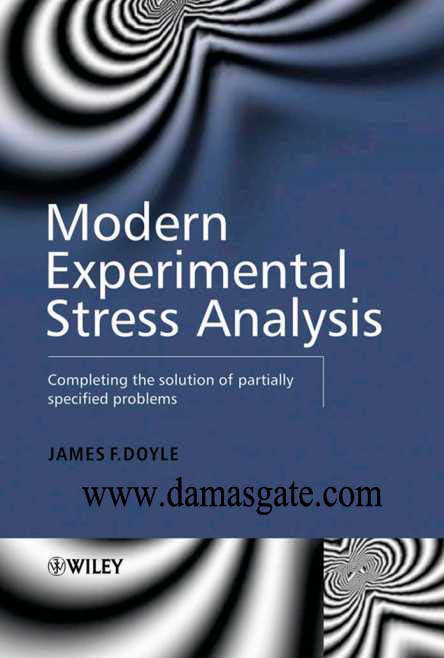Modern Experimental Stress Analysis 2
This book is based on the assertion that, in modern stress analysis, constructing the model
is constructing the solution—that the model is the solution. But all model representations
of real structures must be incomplete; after all, we cannot be completely aware of every
material property, every aspect of the loading, and every condition of the environment,
for any particular structure. Therefore, as a corollary to the assertion, we posit that a
very important role of modern experimental stress analysis is to aid in completing the
construction of the model.

Preface
What has brought us to this point? On the one hand, there is the phenomenal growth
of finite element methods (FEM); because of the quality and versatility of the commercial
packages, it seems as though all analyses are now done with FEM. In companies
doing product development and in engineering schools, there has been a corresponding
diminishing of experimental methods and experimental stress analysis (ESA) in particular.
On the other hand, the nature of the problems has changed. In product development,
there was a time when ESA provided the solution directly, for example, the stress at a
point or the failure load. In research, there was a time when ESA gave insight into the
phenomenon, for example, dynamic crack initiation and arrest. What they both had in
common is that they attempted to give “the answer”; in short, we identified an unknown
and designed an experiment to measure it. Modern problems are far more complex, and
the solutions required are not amenable to simple or discrete answers.
In truth, experimental engineers have always been involved in model building, but the
nature of the model has changed. It was once sufficient to make a table, listing dimensions
and material properties, and so on, or make a graph of the relationship between quantities,
and these were the models. In some cases, a scaled physical construction was the model.
Nowadays the model is the FEM model, because, like its physical counterpart, it is a
dynamic model in the sense that if stresses or strains or displacements are required, these
are computed on the fly for different loads; it is not just a database of numbers or graphs.
Actually, it is even more than this; it is a disciplined way of organizing our current
knowledge about the structure or component. Once the model is in order or complete, it
can be used to provide any desired information like no enormous data bank could ever
do; it can be used, in Hamilton’s words, “to utter its revelations of the future”. It is this
predictive and prognostic capability that the current generation of models afford us and
that traditional experimental stress analysis is incapable of giving.
Download
*
and
*